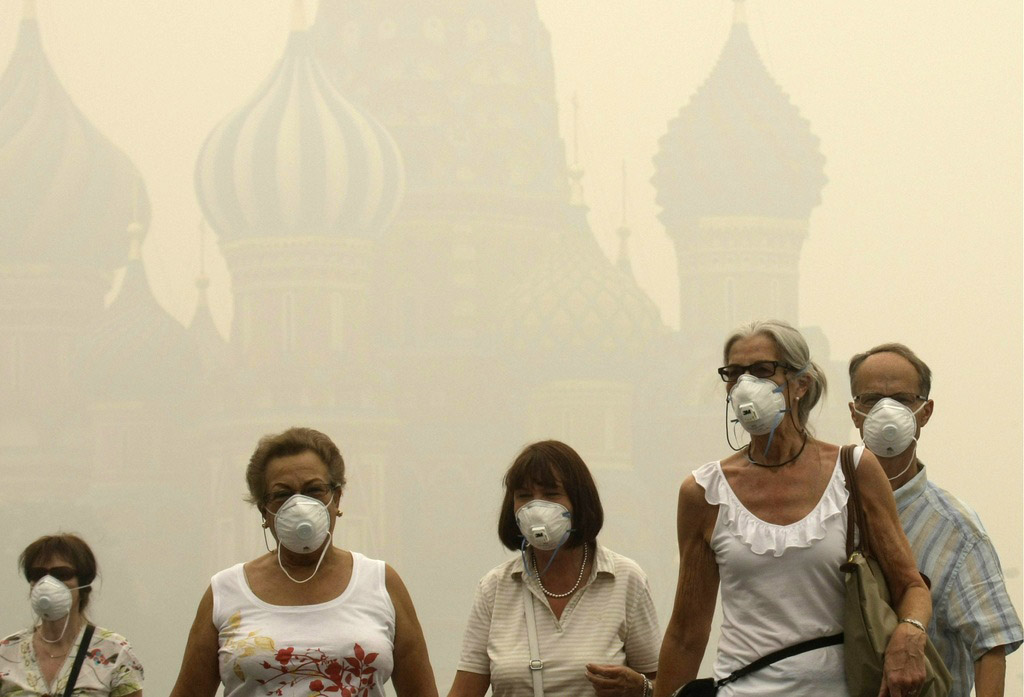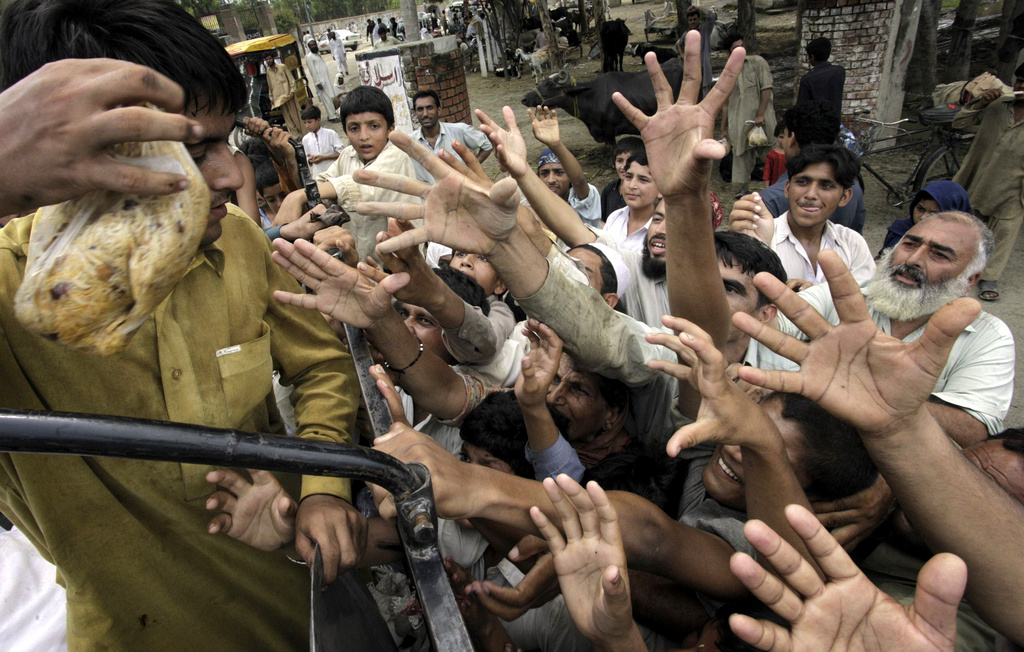What is fuelling floods and fires?

As flooding in Pakistan disrupts millions of lives, and huge areas of Russian forest burn, many people are wondering whether they are linked.
Flooding of a 1,000km stretch along the Indus river has already claimed about 1,600 lives, and driven hundreds of thousands from their homes. Over 13 million people have been affected.
In Russia temperatures have stood for weeks at almost 40 degrees; fires have destroyed villages and forests, while a pall of smog lies over large stretches of the country, including Moscow. More than 50 people have died as a direct result of the fires, while the mortality rate has doubled in the capital, the authorities admit.
While most climate experts say that it is too soon to draw any conclusions about a link with climate change, many agree that current events fit in with the warnings issued by the International Panel on Climate Change (IPCC) over the past 20 years.
Omar Baddour of the World Meteorological Organisation told the AFP news agency that the temperatures in Russia and the extent of the floods in Pakistan had both hit record levels this year.
“The way extremes follow one after the other and the speeding up of records follow the IPCC predictions,” he said. “But we need to observe these extremes over several years in order to draw any conclusions about the climate.”
Unfortunate combination
As far as the situations in Russia and Pakistan are concerned, there is very probably a “dynamic link” between them, Olivia Romppainen-Martius of the Institute for Atmospheric and Climate Science Institute of the Federal Institute of Technology Zurich (ETHZ), explained to swissinfo.ch.
That link is the jet stream, a fast flowing current of air which sweeps around the Earth high in the atmosphere.
On the one hand, the warm air mass produced by the heatwave in Russia is speeding up the jet stream, and on the other, more air is being drawn upwards in the area over Pakistan.
And here a second unusual factor comes into play, Romppainen explained, in what she described as an “unfortunate combination of two phenomena”.
“This year the monsoon has brought an enormous amount of humidity to northern India and Pakistan. As this very humid air mass rises, it causes heavy precipitation.“
But Romppainen, a specialist in dynamic meteorology, cannot say whether the clash between these two phenomena is simply chance, or whether other factors, including climate change, are involved.
Since this needs to be investigated by using model calculations, scientists cannot yet say anything about future climate developments, she said.
More extreme events
These calculations are used to determine whether the number of extreme weather events is likely to increase as a result of climate warming.
On the other hand, Romppainen is sure that neither the current heavy rainfall in China nor last weekend’s flooding in central Europe, have anything to do with the clash between the jet stream and the monsoon.
The flooding in Europe is the result of an area of low pressure which has brought lots of humidity from the Mediterranean or Black Sea, she said.
Jean-Pascale van Ypersele, vice-chairman of the IPCC, told AFP that extreme events are likely to re-occur and to intensify when the climate is disrupted by greenhouse gas pollution, even if it is impossible to be 100 per cent sure that they would not also have happened 200 years ago.
“Extreme events are one of the ways in which changes to the climate make themselves dramatically felt,” he said.
Insurance interest
Whatever the hesitations of climate experts, reinsurance companies are examining the implications of the current weather phenomena.
The director of Zurich-based Swiss Re, the world’s second biggest reinsurer, told the Reuters news agency that the drought in Russia could spur interest in crop insurance in the country.
“Nobody knows if the weather pattern that we see at the moment can repeat itself next year or just in 20 years, and I think this helps to raise awareness for financial risk management measures,” Reto J. Schneider said.
Swiss Re estimates that only about 25 per cent of Russian crops are currently insured, and that many farmers rely on bailouts from the state when their crops fail.
Although the overall grain forecast for Russia has been sharply reduced for 2010 and exports have been banned until the end of the year, Swiss Re expects the country to become the world’s breadbasket, “because this is where the land is available”.
Meanwhile analysts from the German insurer Münchener Rück have said they believe the current weather events are strong indications of climate change.
Julia Slater and Renat Künzi, swissinfo.ch
By August 9 the floods had affected some 13 million people, according to the United Nations.
1,600 people had died, and about 2 million were homeless in the worst floods in the area for 80 years.
The flooding has spread south and the Indian part of Kashmir is also affected.
Landslides have hampered relief efforts, and heavy rain has grounded some helicopters.
The Pakistani army and navy are among those trying to get aid through to the victims.
Foreign countries, aid groups and the United Nations have promised or are delivering aid.
The UN pledged $10 million (SFr10.6) to help Pakistan deal with the disaster and have provided relief supplies.
The US is providing $10 million in emergency aid. It has also provided military helicopters, rescue boats, water-filtration units, prefabricated steel bridges and thousands of packaged meals.
The European Union will donate €30 million (SFr 41.7 million), and China 10 million yuan (SFr1.56 million).
A number of Swiss aid agencies are active in the area.
According to the US National Oceanic and Atmospheric Administration, Earth has never been as hot as in the first six months of 2010.
Since the end of July, Moscow has experienced the highest temperatures since records began 130 years ago.
Hundreds of wildfires are burning, and there is concern that they could reach a nuclear plant in the Ural mountains.
A pall of smoke lies over Moscow and the death rate there has doubled.
Switzerland has sent firefighting equipment and protective clothing, and experts working with local doctors to care for burns victims.
In north-west China a huge landslide triggered by torrential rains on August 7 has killed more than 700 people, with more than 1,000 still missing.
Flash floods in Central Europe during the weekend of August 7-8 killed at least 15 people in the Czech Republic, Germany, Lithuania and Poland and thousands of people had to be evacuated from their homes.

In compliance with the JTI standards
More: SWI swissinfo.ch certified by the Journalism Trust Initiative












You can find an overview of ongoing debates with our journalists here . Please join us!
If you want to start a conversation about a topic raised in this article or want to report factual errors, email us at english@swissinfo.ch.